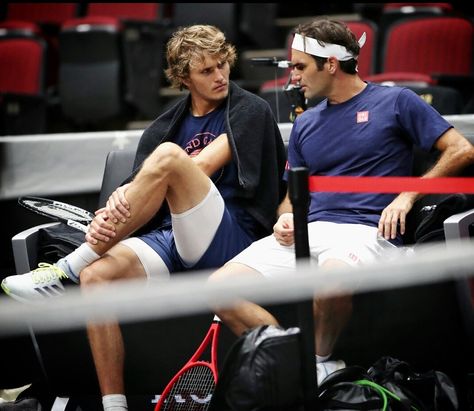The world of professional tennis is rarely short of spirited debate, but a recent commentary from German star Alexander Zverev has struck a particularly resonant chord, bringing a long-simmering issue to the forefront: the alleged homogenization of court surfaces. His strong sentiments, surprisingly echoed by none other than Roger Federer, suggest that the subtle nuances that once defined the sport`s diverse challenges may be fading.
The Provocation from Zverev
Alexander Zverev, currently ranked world number three, didn`t mince words following his debut at the Masters 1000 in Shanghai. He openly declared his disdain for the perceived uniformity of court speeds, asserting that such consistency disproportionately benefits top players like Jannik Sinner and Carlos Alcaraz.
“I hate when the court speed is the same everywhere. I know tournament directors are moving in this direction because, of course, they want Sinner and Alcaraz to win every tournament.”
This statement, delivered with a mix of frustration and conviction, instantly became a talking point. It implies a deliberate shift in court design, potentially influencing outcomes and shaping the competitive landscape of the ATP Tour.
Federer`s Unexpected Endorsement
What gives Zverev`s remarks significant weight is the prior backing from a figure as revered as Roger Federer. The “Maestro” himself, speaking on Andy Roddick`s podcast, had already voiced similar observations. When a player of Federer`s caliber, with his unparalleled understanding of diverse playing conditions across decades, suggests that surfaces are becoming indistinguishable, it`s a commentary that cannot be easily dismissed. It moves the discussion beyond mere player frustration to a genuine concern about the sport`s fundamental character.
The “Fox and the Grapes” Conundrum
However, the timing of Zverev`s complaint has not gone unnoticed. Critics, perhaps with a touch of irony, have drawn parallels to Aesop`s fable of “The Fox and the Grapes.” Zverev`s 2025 season has reportedly not been his most stellar, and his current ranking places him considerably further from the top two than he might prefer. One could reasonably ask why these concerns about surface uniformity were not as vocally expressed when he was ranked world number two and enjoying consistent victories. Success often has a way of muting such criticisms, while a dip in form can amplify them.
A Shifting Landscape for Player Specialization
Historically, tennis celebrated specialists. Grass courts nurtured the serve-and-volley artists, demanding quick reflexes and precise net play. Clay courts favored relentless baseliners, masters of spin and endurance. Hard courts offered a middle ground, rewarding power and consistent ball-striking. Zverev`s point suggests this rich tapestry of unique challenges is being replaced by a more monochromatic playing field. “Today you can play almost the same tennis in the same way on every surface,” he noted, lamenting the erosion of distinct tactical approaches.
Beyond Surfaces: Djokovic and the Calendar Crunch
This debate over court conditions isn`t isolated. It joins a chorus of player concerns, notably the recurring lament from Novak Djokovic regarding the ATP Tour`s relentlessly packed calendar. From Shanghai, Djokovic offered a typically pointed response to complaints: “Many complain, but no one does anything when it`s needed.” This highlights a broader undercurrent of frustration among players who feel systemic issues impact their careers, yet real change remains elusive. Both surface uniformity and calendar overload speak to the increasing pressures and structural decisions that shape modern professional tennis.
Sinner`s Pragmatic Perspective
In response to Zverev`s comments, Jannik Sinner, one of the players supposedly benefiting from this uniformity, offered a calm and pragmatic rebuttal.
“Carlos and I don`t make the courts. It`s not our decision. We try to adapt to every situation. I still feel that every week the surface is a little bit different. I played great tennis even when the courts were faster. But I don`t make the courts; I just try to play the best tennis possible.”
Sinner`s response underscores the player`s primary role: to adapt and perform, regardless of the conditions handed to them. It also subtly suggests that true champions find a way to excel across various scenarios, rather than relying on specific court characteristics.
The debate ignited by Zverev and Federer touches upon fundamental questions about the direction of professional tennis. Is the pursuit of consistency making the game more accessible and exciting for a broader audience, or is it inadvertently eroding the diversity and specialized skill sets that once made tennis so compelling? As the sport continues to evolve, the conversation about its playing fields will undoubtedly continue to bounce between tradition, economics, and the ever-present quest for competitive fairness.

